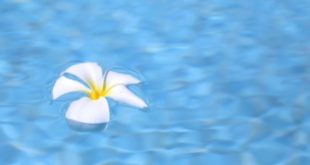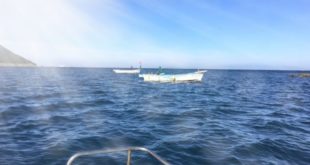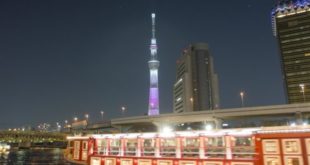The National Science Museum, located in Ueno Imperial Grant Park, is the only national science museum in Japan.Then, I will introduce the charm of “National Museum of Science and Technology” in detail.Please make sure to refer to it when you visit.
Contents
- 1 Basic information on Ueno’s popular museum “National Museum of Science”
- 1.1 Access and parking information of the popular museum “National science Museum” in Ueno city
- 1.2 Fee and ticket purchase method at the popular museum “National Museum of Science” in Ueno
- 1.3 Ueno Popular Museum “National Museum of Science” at the busy time
- 1.4 3 roles of the popular museum “National Museum of Science” in Ueno
- 2 Exhibition and event of the popular museum “National Museum of Science” in Ueno
- 2.1 Attraction of the popular museum “National Museum of Science” in Ueno
- 2.2 Attraction of the “Earth Pavilion” at the popular museum “National Museum” of Ueno
- 2.2.1 Underground 3 stories “Explore the nature of the nature”
- 2.2.2 Underground 2 stories “Global environment variation and evolution of living organisms”
- 2.2.3 Underground 1 stories “Global environment variation and evolution of living organisms”
- 2.2.4 first Floor “Global History Navigator”
- 2.2.5 second Floor “Explore the Earth with Science and Technology
- 2.2.6 third Floor “Life Running on Ground”
- 2.3 Attraction of the popular museum “National Museum of Science” in Ueno
- 2.4 Attraction of “Theater 36 0” at the Popular Museum of Ueno “National Museum of Science”
- 2.5 Attraction of “Night Astronomical View of the Night” of Ueno’s Popular Museum “National Museum of Science”
- 3 Summary
Basic information on Ueno’s popular museum “National Museum of Science”
Phone Number 03 – 5777 – 8600
URL http://www.kahaku.go.jp/
Business hours 9:00 – 17:00 (Last entry is 16:30)
Gold / Saturday 9:00 ~ 20:00 (final entry is 19:30)
* There is a possibility of extension during summer and golden week.
| Golden Week Period | 9:00 to 20:00 | April 28, 2019 (Sun) – May 5, 2019 (Sun) (Admission to 19:30) |
| 9:00 to 18:00 | May 6, 2019 (Mon) (Admission to 17:30) |
* During the special exhibition period, there is a possibility of extension.
Closed Mondays (for national holidays, the next day is the next day)
Year-end and New Year (December 28 – January 1)
Access and parking information of the popular museum “National science Museum” in Ueno city
• 5 minutes walk from JR Ueno Station (Koenguchi)
• 10 minutes walk from Ueno Station on the Ginza Line and Hibiya Line on the Tokyo Metro Ginza Line (Exit 7).
• 10 minutes walk from keisei line Keisei Ueno Station (front entrance)
Car access
There is no parking lot or bicycle parking in the building.Please use the parking lot in the neighborhood.
List of parking lots near the National Museum of Science and Technology
| Name | Phone | Hours of Business | Number of Enclosures | Remarks |
| Ueno Park first Parking | 03-3821-0755 | 9:00 ~ 21:30 | 100 normal vehicles 30 motorcycles |
Disabled persons are free |
| Ueno Park second Parking Lot (Bus) | Same | Same | Large 24 units | |
| Times Ueno Station Koenguchi (Old Ueno Station Toll Parking Lot) |
0120-77-8924 | 24 hours | Regular Vehicle 191 Units | Ordinary Vehicle Only |
| Keisei Ueno Station Parking | 03-3834-5708 | 6:00 – 24:00 (Up to 22:00) |
Regular Vehicle 120 Units | Normal Vehicle Only Discounts for Disabled Persons |
| Ueno Parking Center | 03-3833-8151 | 24 hours | Regular Vehicle 400 Units | Normal Vehicle Only Discounts for Disabled Persons |
| Taito-ku Ueno Chuo Street Underground Parking |
03-5812-3695 | 24 hours | Regular Vehicle 300 Units | Ordinary Vehicle Only |
| TIXTOWER UENO Parking | 03-3842-5677 | Weekdays / 8:00 – 22:00 Saturday, Sunday, Holidays |
Regular Vehicle 30 Units | Ordinary Vehicle Only |
* Please contact each parking lot for details.
Fee and ticket purchase method at the popular museum “National Museum of Science” in Ueno
■ Entry fee
(Permanent Exhibition)
| Permanent Visitors | General and College Students | 620 yen |
| High school students (including higher school students) | Free | |
| Permanent Exhibition Group Visitors (* 20 or more) |
General and College Students | 500 yen |
It will be purchased on the day.
※ The group discount rate has been revised since January 1, 2018.(310 yen → 500 yen)
(Special Exhibition)
The fee is different depending on the display.Please check each time on the website.
You can buy it in advance or buy it on the day.It can also be purchased from a ticket sales site on a dedicated website.If you purchase a ticket for “Special Exhibition”, you can also visit “Earth pavilion” and “Japan Pavilion” which are “permanent exhibitions”.
| Name | Period | Charges | |
| 2017 Year Anniversary | 2018/10/30
~ 2019 / 03 / 03 |
General and College Students | 1600 yen |
| Small, Medium, High School | 600 yen | ||
| Large Mammal Exhibition 2 – All Survivors | 2019/03/21
~ 2019 / 06 / 16 |
General and College Students | 1600 yen |
| Small, Medium, High School | 600 yen | ||
(Exhibition)
You can visit the museum with the entrance fee of “Permanent Exhibition”.
(Astronomical Gaze at Night)
| Night Astronomical View | General and College Students | 310 yen |
| High school students (including higher school students) | Free |
* The night astronomical view is from the first and third Fridays, from 19:30 to September in 4 – September, and from 18 to 30 in March and March (in the case of sunny weather, it is about 2 hours). 10.
* If Fridays are on January second and third, we do not have a night astronomical view.
* In April 2015, the web application system has been applied to advance applications.
* Please check the details on the website.
■ Those who can use it free of charge
| ■ Older and | Please present a certificate that tells you the age. (Those under 18 years old include the first March 31 after the date of full 18 years of age.).) |
| ■ Disabled | Personal ※ The 1 persons with disabilities, the atomic bomb survivors, and the victims of the war and the 1 persons of those persons are free of charge.Please show us one of the following certificates (* 1) when you enter. (* 1) Certificate : physical disability certificate, Nursing Care Handbook, mental disability certificate, Disability person Welfare Service Recipient Certificate, Self-reliance support medical recipient certificate, Intractable Disease Medical Treatment Recipient Certificate, Atomic bomb survivor Handbook, War Injured Person Pocketbook |
| Group * There is a system for exemption of admission fee for the admission of special support schools, disability welfare facilities, etc., so please contact us. |
|
| ■ Other members | Friends of Friends, people with the Repeters Pass, supporting members, member members, students at university partnership enrollment university, and faculty members |
* Please contact directly for the special exhibition as it will be different each time.
* Repeters Pass : 1,030 yen / year
It is a 1 year membership fee of 1,030 yen, and it is free pass system which allows you to enter freely as many times as many times as you can in a permanent exhibition.Special exhibitions include 10% off of museum shop and 5% off of restaurant “Mussel AEON”, which can be entered at a discounted price.
Please apply at the official website or at the front entrance of the front entrance of the first basement of Japan Pavilion (as a general guide).
Ueno Popular Museum “National Museum of Science” at the busy time
The National Museum of Science and Science can also check the congestion situation from the official page of each event, so you can play comfortably when you schedule it.
Especially during the time when the National Science Museum is crowded, it is summer vacation.It is always crowded during summer vacation, but it is expected to be crowded from the beginning of the week of summer vacation to around the end of the Obon festival from the beginning of August to the end of August.
On the other hand, during the summer vacation, the National Science Museum is open during the rainy season (from mid-July to late end of July), and on weekdays in late August.Please refer to it as it is a hot spring during the rainy season in late August and late August.
Also, it is expected to be crowded on Saturdays and Sundays on Saturdays and Sundays.During the special exhibition, I recommend you to purchase advance tickets for convenience stores in advance.
If you want to go with your child, if you go out and check out the congestion situation of Ueno zoo, it will be useful to decide whether you can go around in 1 days or not.
3 roles of the popular museum “National Museum of Science” in Ueno
The National Science Museum is one of Japan’s oldest museums in Japan, founded in 1877 (1877), and is the only national museum of science.As a core facility for science museums in Japan and Asia, this facility has 3 roles : research and research, collection and storage of sample materials, and exhibition and learning support.
These activities have been carried out in 3 areas, including the main Building, the comprehensive Research Building, the Natural History Sample Building, the Experimental Plant Garden, and the attached Institute for Nature Study in Minato-ku, Shirokanedai, centering on the main building of Ueno.
So let me introduce you to 3 roles, respectively.
Survey Research
We study and research how the Earth and life have evolved, and how mankind has developed civilization and developed science and technology.The aim of this project is to convey the results of the research together with sample materials to the future and to return them to society.
We conduct research in collaboration with various institutions, focusing on 5 research centers (animal, plant, geology, human, science and engineering), and 3 research centers (technical technology history information center, sample data center, molecular diversity research data center).
Sample data collection / storage
Specimens and materials related to natural sciences are collected and stored in the future and stored in the future.These sample materials are invaluable for international preservation, including the underlying type specimen of scientific names.
A variety of archival materials such as animal, plant, fungal specimens, living plants, minerals, fossil, human bones, science, and technical history materials, including the world’s most valuable materials, are also in Japan’s top class.We aim to build a nacionarcoleccion that can be proud of as Japan, and we are working to improve our conservation environment to succeed to the next generation.
Display and Learning Support
The National Museum of Science and Technology has a number of researchers, a number of specimens, and a vast array of research results in various fields.In order to make more effective use of these resources, we have been working with academic societies, other museums, and companies to develop more attractive exhibits and to develop learning support programs.
At the exhibition business, the main building in Ueno is centered on the main building of Ueno, and exhibits special exhibitions, exhibitions, and exhibitions in addition to permanent exhibitions at 3 districts (Ueno Honkan, Tsukuba Botanical Garden, and attached Institute for Nature Study).Through the display of the message “We aim for coexistence of mankind and nature” through our exhibition activities, we aim to create an opportunity to think about what we need to do to build a future that can coexist with humanity and nature.
Exhibition and event of the popular museum “National Museum of Science” in Ueno
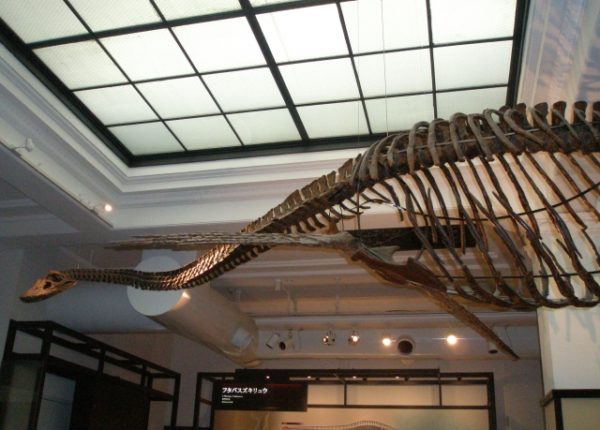
We will introduce the exhibitions and events of the Ueno main building.The Ueno Main Building is divided into 2 buildings, the Japan Pavilion, which was constructed in 1931, and the Earth Pavilion, which was renewed in July 2017.
Mainly at the Japanese Pavilion, the theme “Nature and us” is displayed on the Japanese archipelago, and exhibits are displayed on the Japanese archipelago, the process of forming Japanese people, and history.You will be able to learn more about the natural environment and culture of Japan in our country.
The Earth Pavilion is an exhibition where people living in Earth are deeply connected with each other on the theme of “Earth Life History and Human Beings”.We can also learn about the evolution of life through the repetition of life and the evolution of the global environment.
At the Earth Pavilion, there is a gallery called “Compass,” which is an exhibition room for children and parents of preschoolers, and a “Compass,” an omnidirectional theater, and a “Theater 360” theater.Also, there is a special exhibition room.
Other than that, various events are planned throughout the year at the National Museum of Science and Technology.There are “Discovery Talk”, “Natural Observation Meeting”, “Public Exhibition of Celestial Objects at Night”, “Experimental Classroom for Fun Science”, “Wonders of Nature”, “Science Class for Sound”, etc.One of them is “The Astronomical View of Celestial objects at night”.
Attraction of the popular museum “National Museum of Science” in Ueno
The Japan Pavilion was built in 1931, and it is a very beautiful building that has been designated as an important Cultural Property for more than 80 years, and has been designated as an Important Cultural Property for more than years. 1931.The building is a Neo-Renaissance style, with a dome shaped white roof and stained glass giving you an atmosphere like a cathedral.
On a sunny day, the stained glass from the ceiling that can be seen from the middle hall of the first floor is more beautiful, so I recommend you to sit on a bench and watch it slowly.
In the Japanese Pavilion, the theme of “Nature and Us of Japanese islands” is set up on each floor, and exhibits that emphasize the nature of the message are displayed.Then, let me introduce you to each area for each area of the area.
Japanese Origin
The north of third floor is the exhibition on the theme of “The origin of Japanese Islands.”.It is a corner where you can learn the history of dynamic fluctuation until the Japanese archipelago is built.
Here, the restored skeleton of the first head, Ryuryu, Futaba co. ltd Suzuki Ryu, discovered in Japan, draws attention.Some of the real fossils are also stored.
Also, the fossils of ammonite that have been excavated in Japan are the largest number of exhibitions in Japan.It is a familiar fossil, but a fossil of a large ammonite is precious, so please try to touch the fossil of “pakidesmoceras (ammonite)”, so please touch it.
Various organisms born in Japan
On the south side of third floor, there are various creatures that are born in Japanese archipelago.It ranges from stuffed animals to marine creatures and minerals.The theme is’ The face of the Japanese archipelago.’.Natural environments that are both topographically and climate-complex have nurtured a wide variety of living creatures.
Japanese and natural
On the north side of the second floor, on the theme of “Japanese and Nature”, there is an exhibition where you can learn how Japanese people who have begun to live in the Japanese archipelago coexist with nature.This corner is full of attractions.
First of all, a stuffed sample of a dog, Hachiko, and a sample of a Jero of a Antarctic observation dog.
Next, the exhibition is located in the center of the corner.The Japanese model of each era is exhibited in 6 boxes, from Minatogawa to Jomon, Yayoi to the Middle Ages, to modern people, and from modern people to modern people.It reproduces the appearance of height, face, and so on, and the lifestyle is reproduced, so you can see the transition at a glance.
The interesting thing is that the case of “modern man” is empty.This is a shooting spot, and you can enjoy the strange feeling that you have been displayed as “modern man”.
At the end, there is a display of mummies in the Edo period.It’s very realistic, so please look it up.
Creatures’ Japanese Islands
It is an exhibition of the second story of the “Japanese Archipelago” on the south side of the story.It is a corner where you can find out what kind of evolution the living creatures in Japanese islands have made.
It is an interesting spot for animals that have achieved their own differentiation while adapting to natural environments such as climate and complex terrain that are rich in changes in Japanese archipelago.
There is also a collection of stag beetles that boys love.A number of specimens are displayed along with a distribution map.
Techniques
On the first floor, the theme “The technique to watch Nature” shows how Japanese people have developed and explained how to develop astronomy, earthquake observation, and time.Past literature, tools and equipment for natural observation are displayed.All the exhibits listed below are certified as important cultural properties.
troyton Astronomical Telescope
A full-scale astronomical telescope that was first used in Japan in 1880.It can be said that the history of astronomical observation of Japan started from here.
Shibukawa Shunkai’s Celestial Sphere
A celestial globe with 61 constellations and 308 stars created by its own observations
Milne Horizontal Pendulum Seismometer
The oldest seismometer in Japan invented around 1894
“Theater 36 0” and the Museum shop and lounge
On the first basement floor, there are “Theater 36 0”, museum shop, and lounge.
The museum shop also sells real fossils, ranging from 1000 of yen to hundreds of thousands of yen.There are also “mammoth skin and hair hair”.It’s an extra information, but there is something called “Fossil Gacha”, so it is recommended for those who cannot reach a real fossil.
The other popular ones are Chu-dog Hachiko goods.Among them, a cute stuffed toy is a popular number one.
In the lounge, there are more than 10 kinds of menu lineup, and it’s very satisfying.Some of them are inspired by dinosaurs, so you can enjoy it.
Attraction of the “Earth Pavilion” at the popular museum “National Museum” of Ueno
This is the Earth pavilion that has been partially renovated on July 14, 2015.It is based on the theme of “History of Life and Mankind”.There is a permanent exhibition and a special exhibition room divided into 10 areas in the building on the third basement floor and 3 stories above ground. There is also a restaurant “Mussel Ion” and a roof Herb Garden on the roof.It is very spacious, so I recommend you to watch it slowly while taking a break.
Then, let me introduce you to each area for each area.
Underground 3 stories “Explore the nature of the nature”
The third basement is the theme of “Exploring the Workings of Nature”, and it is a corner where you can learn the results of human beings who have been exploring the workings of nature.
The main highlight of this floor is “Tsuki no ishi” (stone of the moon).Apollo 11 and 17 were brought back from the moon, and they were donated by the United States.
You can also see a replica of a telescope of a Galileo Galilei or a telescope of a Isaac Newton.
Underground 2 stories “Global environment variation and evolution of living organisms”
The second basement is the theme of “changes in the global environment and the evolution of living things.”.The life created about 4,000,000,000 years ago has evolved in the midst of a great change in the global environment, and has evolved and has evolved in the midst of the global environment.You can follow the path of evolution.
At this corner, there is an original human monkey, an original man evolved from a sarcastic monkey, and a reconstructed model of an old man who has evolved from an old man.These models, which have been restored with the imagination of archaeology, anatomy, and imagination, are a must-see for the evidence obtained from the years of research.
Underground 1 stories “Global environment variation and evolution of living organisms”
The first basement is the same as the second basement, with the theme of “change of the global environment and evolution of life.” This is a dinosaur floor.
There is no doubt that it will be overwhelmed by a large group of fossils lined up in full of exhibition rooms.There are only major dinosaurs such as Tyrannosaurus, Triceratops, stegosaurus and so on, so you can enjoy it even if you are not a dinosaur otaku.In addition, most of the fossils have been restored, so they are full of power.
There is an idea for the display method, and “it reproduces the scene where the tyrannosaurus is trying to hunt the Triceratops”, so you can feel like you are in the jungle.By the way, it is said that the sample of Triceratops, which is located here, is the best storage condition in the world.
The first floor is the “Earth History Navigator” floor.It is surrounded by 3 large screens, and it is possible to trace the transition of life history, life history, and human history by images.You can enjoy a 13,800,000,000 year trip.
In addition, this section is a symbol zone that connects the entire exhibition room of the Earth Pavilion.On the center of the floor is the meteorite, the first dinosaur skeleton in Japan, the Himawari No. 1, the meteorological satellite “Himawari No.”.This satellite is the first satellite of Himawari, which continues to observe the skies of Japan.
There is also a variety of earth’s creatures on display.Surprisingly, these are mostly specimens, or in the past, they were alive, so it’s amazing.Especially, the sample of Giant squid and the sample of whale shark are the highlight, so please be sure to see it.You will be surprised by its size and dynamism.
We also show the “Flower of Life” and “Various Landscape on Earth” that summarize the growth of living things.Each movie is about 5 minutes short, so it’s very impressive, so I recommend it.
second Floor “Explore the Earth with Science and Technology
The theme of the second story is “Exploring the Earth with Science and Technology.”.It is a corner designed to experience intuitively through a large number of experiential exhibits.
The observation station is an observation station.You can see various data that are observing the Earth in almost real time.If you hold your hand over a moving image, you will be able to see each data in detail.It’s an exhibition where you feel like your monitor is operated by your hand, and even adults are absorbed in it.
There are also attractive exhibitions such as the experience exhibition to predict the epicenter, the experience of projecting yourself to thermography by infrared ray, etc.
Also on this floor is the exhibition corner on science and technology after the Edo period.There is a famous “0 Battleship Fighter,” commonly called “0 Battle.”.The real size reconstruction model of the Hayabusa asteroid probe is also a highlight.
third Floor “Life Running on Ground”
On the third floor, the theme of “Life that runs through the earth” is a collection of stuffed mammals and birds.This is an impressive number of exhibits the richness of the earth.By the way, the stuffed giant panda that was bred at Ueno Zoo is also displayed here.
On the “Savannah Mammalian corner” screen, “Live and dead wilderness” is displayed.The screening time is about 5 minutes, but you can see the strong appearance of wild animals. Please take a look at it.
Attraction of the popular museum “National Museum of Science” in Ueno
The “Compass” of the parents and children on the third floor of the Earth pavilion is very popular among children.
This exhibition room is designed to encourage children aged 4 to 6 years old to communicate “communication between parents and children” for children aged between ages and ages.This is a space where you can communicate with your parents while playing with them, such as “making together”, “mimicking movements”, “conveying experiences and discoveries”, “looking back at experiences together”, and “providing physical support”.
There is also a lot of people who can feel familiar with museums and natural science.Please try to find a hidden rug while playing with your parents.Then let’s talk about what we felt together or look back on the experience.It will be an important time to nurture the power and thinking power that children feel.
In fact, there are many exciting playground equipment for children.It’s also fun to go under the belly of a camel, check a lion’s ball, or take a picture of a tyrannosaurus.
You need a numbered ticket for the number of people to use for this purpose.You can get a numbered ticket at the information desk on the first floor of the Earth Building.I recommend you to secure a numbered ticket early as it is expected to be crowded on weekends and holidays.You can use it for up to 45 minutes per 1 times.
Attraction of “Theater 36 0” at the Popular Museum of Ueno “National Museum of Science”
Theater 36, located on the B1 floor of the Japan Pavilion, has been opened in 2005 by the Japan Pavilion of the Earth, which was published in the Japan Pavilion of Expo 2005.
In the dome of 12.8 m diameter (about 1 one millionth of Earth), it is full screen, and you will watch the image by standing on the bridge inside.This is the first theater in the world to enjoy unique floating feeling with images that are projected in all directions and with powerful sound, which is the world’s first in the world’s first theater, with 360 degrees of freedom.
There are 5 kinds of original images : mantle and earth variations, human travel, ocean plant chain, dinosaur world, and travel in 13,700,000,000, and the content of the movie changes.You can watch 1 times in about 10 minutes, and you can see a combination of 2.
The screening time is short, so you can enjoy it without getting tired of children, but please be careful of motion sickness due to the movie style.Voice is only in Japanese.
Movie time : 9 : 30 (first screen) ~ 16:30 (last movie) * Friday only 19:30 (last movie)
* The equipment has been closed until late March 2019 (scheduled) for the repair of equipment.
Attraction of “Night Astronomical View of the Night” of Ueno’s Popular Museum “National Museum of Science”
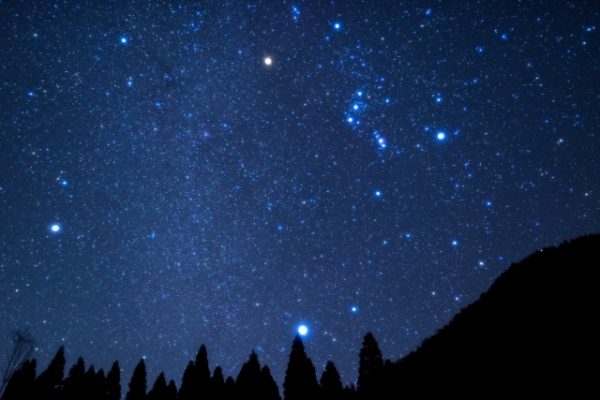
■ Execution Time : Start time of first and third Friday (4 – September) 19:30 ~ (10 – March) 18:30 ~
■ Fee : General and College Students \ 300
* It is only held in the case of sunny weather.
* Please be sure to check on the event calendar on the website event calendar as it may change depending on the circumstances.It may be cancelled due to weather, etc.Please be careful that the final decision will be made 30 minutes before the start of the meeting.
You can observe astronomical objects that are seen in that season with a telescope.It will be held for about 2 hours at a venue with astronomical telescopes on the fourth floor.
It is an observation station with a roof with a dome shape in a dome shape, and it is observed using a 60 cm reflection astronomical telescope.When you adjust the telescope, you first move the astronomical telescope and then move the dome roof to match the position that you can easily observe.This large telescope has a function that allows you to clearly see Jupiter’s banding pattern.
A small telescope is installed so that it can be observed in a balcony like a balcony outside of a building.You can observe various nebula and constellations here.
In observation group, curators will explain more detail, so you can get more interested in celestial objects.It is held regularly, so please participate in it.I also recommend that you participate in it with your child.
Summary
I have introduced the charm of the National Museum of Science, the only national museum in Japan. How did you like it?
Other than the main permanent exhibition, various events are held throughout the year such as special exhibitions of themes with high interest and interests of people, and exhibitions.There are many things that can only be seen here, and it is not an exaggeration to say that it is a museum that covers the fields of natural history and science and technology history.If you go, there will be something to find.
Normally, it’s open until 17 o’clock, but it’s open until 20 o’clock on Friday and Saturday.Since there will be fewer people after 18 o’clock, you will be able to enjoy the exhibition.Adults don’t hesitate to try on their children, so they can try the exhibition.On Friday, it might be fun to look at a different world than usual.Please make sure to visit once.
 toptrip
toptrip

